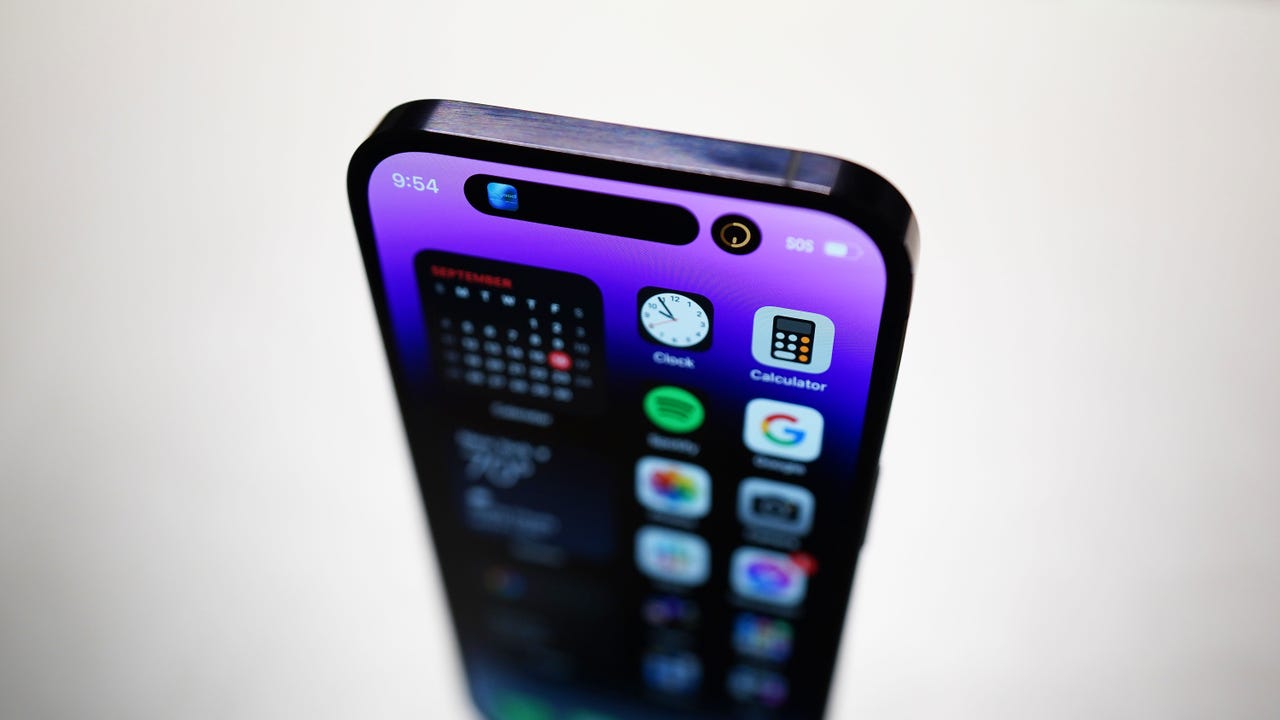'ZDNET Recommends': What exactly does it mean?
ZDNET's recommendations are based on many hours of testing, research, and comparison shopping. We gather data from the best available sources, including vendor and retailer listings as well as other relevant and independent reviews sites. And we pore over customer reviews to find out what matters to real people who already own and use the products and services we’re assessing.
When you click through from our site to a retailer and buy a product or service, we may earn affiliate commissions. This helps support our work, but does not affect what we cover or how, and it does not affect the price you pay. Neither ZDNET nor the author are compensated for these independent reviews. Indeed, we follow strict guidelines that ensure our editorial content is never influenced by advertisers.
ZDNET's editorial team writes on behalf of you, our reader. Our goal is to deliver the most accurate information and the most knowledgeable advice possible in order to help you make smarter buying decisions on tech gear and a wide array of products and services. Our editors thoroughly review and fact-check every article to ensure that our content meets the highest standards. If we have made an error or published misleading information, we will correct or clarify the article. If you see inaccuracies in our content, please report the mistake via this form.
5 useful iOS 17 features Apple quietly released at WWDC 2023

Has it really been weeks already? Apple, during its early-June developer conference, spent a little over two hours debuting its first-ever augmented reality headset, the Vision Pro, reinforcing its silicon kingdom with new Macs, and, as is tradition with WWDC, unveiling a slew of software features coming to an iPhone, iPad, Apple Watch, and Mac near you.
Also: Apple no longer requires a $99 account to access developer betas. Here's the breakdown
But when you're cramming a near decade's worth of research and development into an afternoon keynote, there's bound to be some information that doesn't make the live cut, pieces of technological goodness that only enthusiasts, developers, and possibly journalists who want to write an "X features Apple quietly released" blog post can discover. And so I did.
Below are five new features present in the first developer beta of iOS 17 that you'll want to keep an eye out for come the official release in fall.
And, trust me, you'll wish these features existed already.
1. Interactive widgets
Ever seen a widget on your home screen and wish you could just tap, swipe, and interact with it without it expanding into the full-screen version?
At WWDC, Apple introduced interactive widgets for the iPad, but it turns out the feature will also be available on the iPhone, giving users more finite access to functions like playing and pausing music, checking off boxes in the Reminders tile, and turning on or off smart home appliances directly from the home screen.
Also: Every product Apple announced at WWDC: Vision Pro headset, Mac Pro, more
Interactive widgets seem like a natural evolution from resizable widgets, first introduced with iOS 14 in 2020. For now, app support for the feature includes first-party services like Reminders, Apple Music, and Home, and some third-party ones like Quizlet. Expect greater compatibility by the time iOS 17 progresses through its beta phase.
2. Autofill verification codes in Mail
With the growing adoption of multi-factor authentication (2FA), the need to streamline how the iPhone receives and inputs verification codes is apparent. Apple's already integrated autofill with incoming text messages, and the most logical next step is to expand the feature to emails, too.
Also: How to enable 2FA to step up your security
In iOS 17, verification codes sent via the Mail app will also be auto-filled in 2FA prompts, making it more efficient for users to quickly confirm sign-in attempts. Previously, you'd have to open up the mail separately, copy the code, and paste it into the verification text field.
3. Auto deleting used verification codes
Not to be mistaken with the last feature, "Clean Up Automatically" tells the iPhone to automatically delete verification codes in Messages or Mail that were used in AutoFill. The new feature is tucked within the Password Options of iOS 17 and may as well be another one that you wish existed sooner.
Also: Apple makes contact sharing easier in iOS 17 with NameDrop
4. Video Effects in third-party apps
It's arguable that iPhones have superior camera experiences on third-party apps (Instagram, Snapchat, TikTok, etc.) compared to Android, but the new Video Effects feature helps widens the gap for iOS.
Also: Standby on iOS 17 turns your iPhone into a smart display - and I have questions
With a third-party camera app open, a swipe down into the Control Center now presents you with a Video Effects toggle. Within, you're able to set a studio lighting effect, portrait blur, and even AR reactions on top of what's being recorded by the background app.
By applying a filter built natively on the iPhone, the effects appear more natural than those computed by third-party services.
5. Private browsing with Face ID
Private Browsing (Safari's incognito mode) lets users surf the web without the worry of trackers, logging a browser history, and leaking sensitive information to a public device. In iOS 17, a new security feature comes in the form of locking your Private Browsing sessions via Face ID.
Traditionally, if your phone is unlocked, anyone who has access to it can look at your browsing activities, even if it's in Private Browsing. In the latest iOS version, you'll now be able to secure your Safari activities with a Face ID scan or a passcode.
